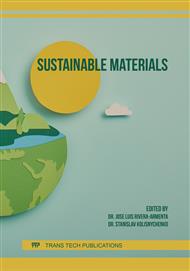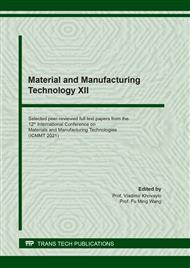p.21
p.29
p.39
p.45
p.51
p.57
p.63
p.71
p.79
Sustainable Fabrication Technology of Composite Board by Kenaf-Polypropylene for Automobile Door Interior Applications
Abstract:
Polypropylene resins have been enfolded with the automotive industry and suppliers to produce several spare parts. This is aimed at achieving zero emissions, kenaf plant which in Latin is Hibiscus Cannabinus is a natural fiber replacement resin. Natural fiber composites come in many different types, but kenaf has been exploited extensively over the last few years. The pre-board flow process of kenaf-polypropylene starts from mixing kenaf about 40% with 60% polypropylene, forming a pre-mat as the first output, entering the main treatment with the hot press into pre-board as the final output. Kenaf-polypropylene door trim is very absorbent of CO2, which is related to natural fiber base material. Door trim with kenaf-polypropylene as the base material reduces the weight by about 30% of the previous polypropylene resin and still provides high rigidity even at a reduced weight. The entire process is requiring 48382.4 kWh / month per cycle of total power consumption.
Info:
Periodical:
Pages:
51-56
Citation:
Online since:
August 2021
Authors:
Keywords:
Price:
Сopyright:
© 2021 Trans Tech Publications Ltd. All Rights Reserved
Share:
Citation:



